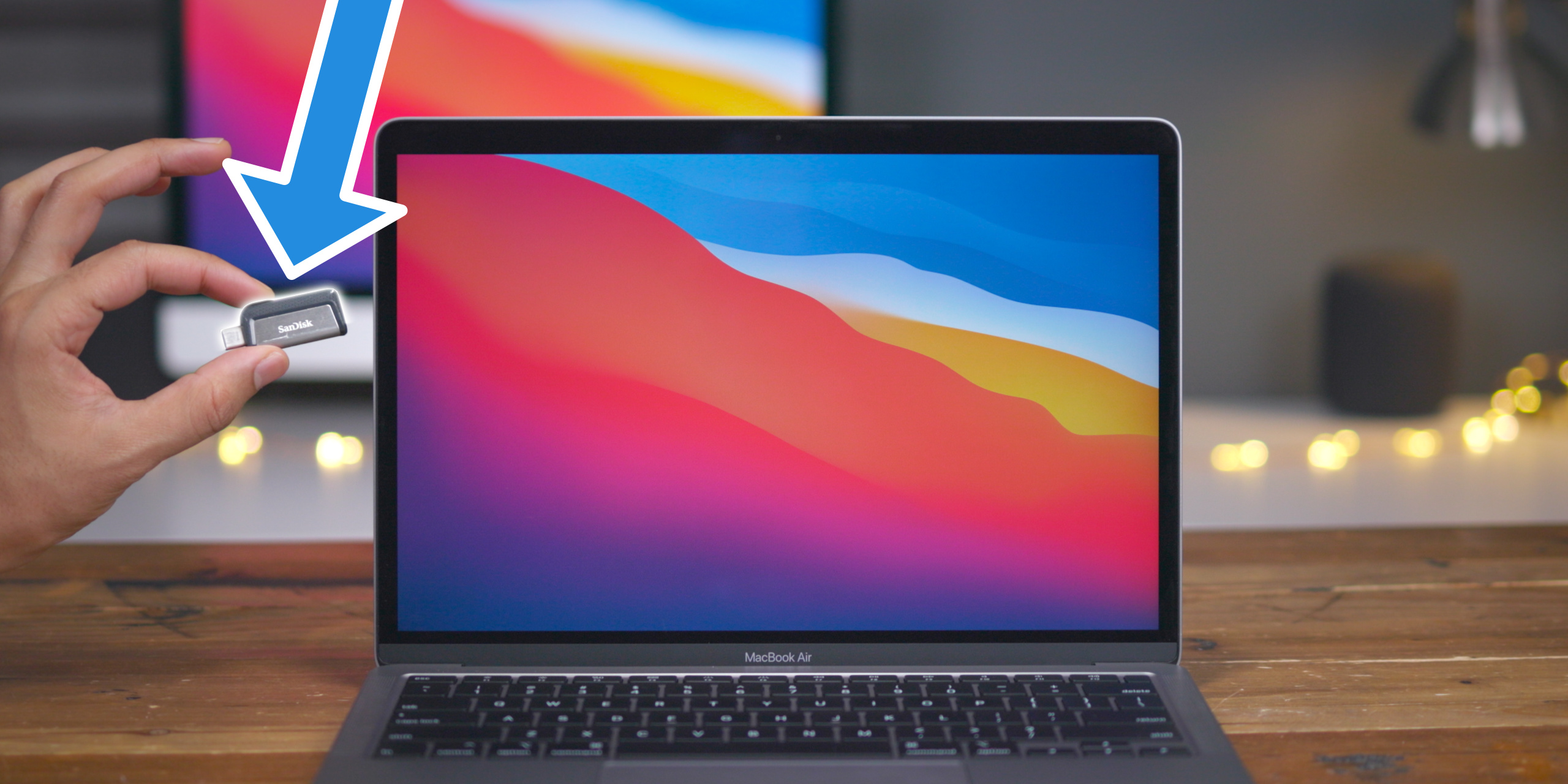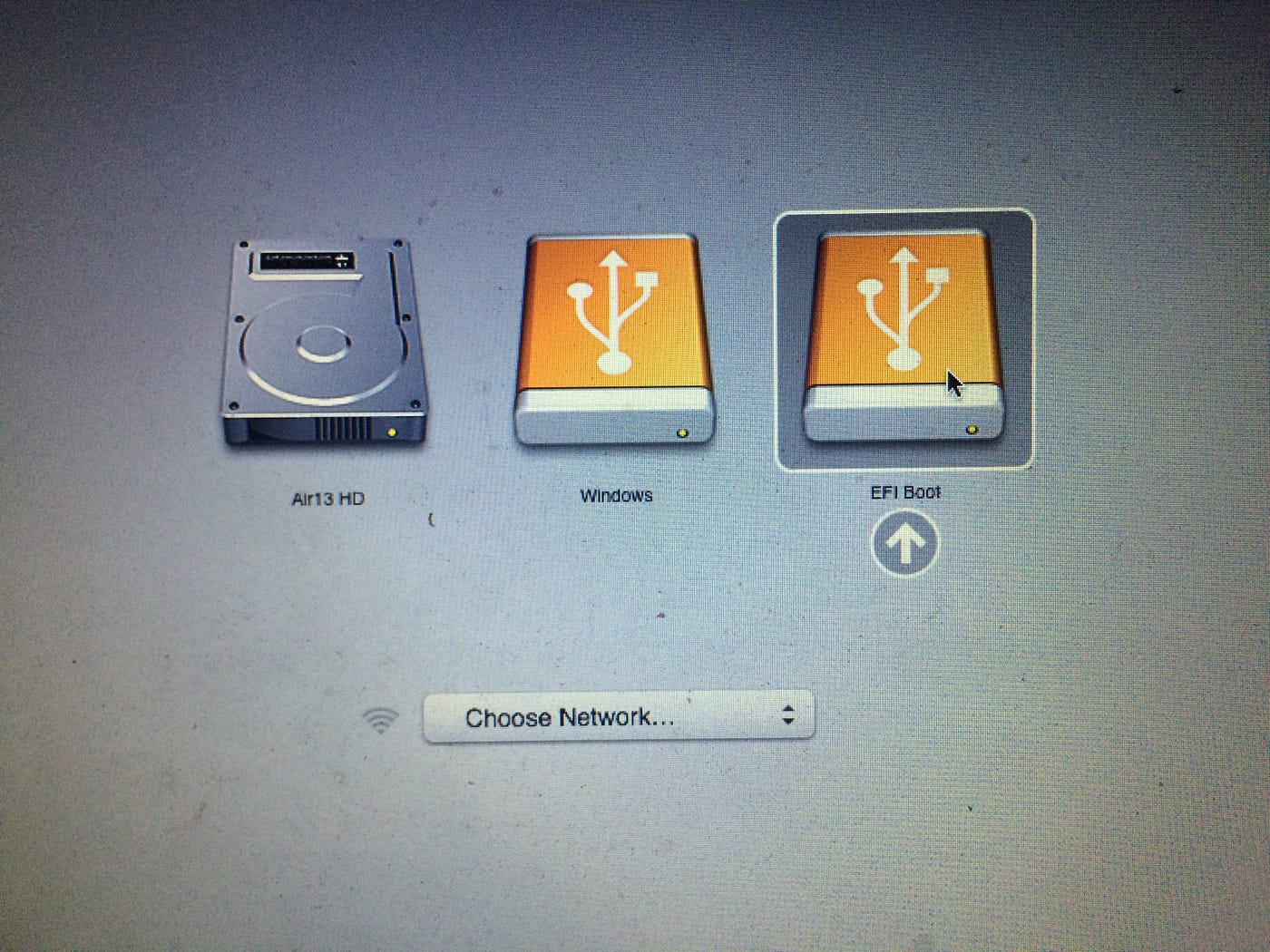

- #MAC INSTALL BOOTLOADER ON USB DRIVE HOW TO#
- #MAC INSTALL BOOTLOADER ON USB DRIVE CODE#
- #MAC INSTALL BOOTLOADER ON USB DRIVE ISO#
- #MAC INSTALL BOOTLOADER ON USB DRIVE WINDOWS 7#
A nice icon with the USB logo should be shown in the boot menu. Insert the prepared USB drive to the MacBook and turn it on while pressing the Option (Alt) key.
#MAC INSTALL BOOTLOADER ON USB DRIVE ISO#
If loadfont /boot/grub/fonts/unicode.pf2 thenĬopy installer and ISO image to the USB driveĮxtract the kernel and initrd from the ISO and copy them and the netboot ISO image itself to the USB stick: If you need to debug the GRUB settings interactively, remove the last line (boot). The config below sets the graphics mode and font on the console to something the installer can use, loads the kernel and initrd into memory and boots. Make a grub.cfg file in /mnt/usb/boot/grub/grub.cfg. Grub-install -target=i386-efi -efi-directory=/mnt/usb -boot-directory=/mnt/usb/boot -bootloader-id=boot -removable Install grub with IA32 EFI boot files on the FAT file system:.We'll assume below that it's mounted in /mnt/usb
#MAC INSTALL BOOTLOADER ON USB DRIVE CODE#
If your spare drive has another partition type or file system, use fdisk to make a 'W95 FAT32' MBR partition (hex partition code 0x0b) and mkfs.vfat to clear the partition and make a new FAT32 filesystem. Installing GRUB and copying the installer files does not destroy the data on the drive, but just to be sure, take backups. If you already have a USB drive with a FAT32 file system and about 50 MB free space, you're set. Download netboot ISO image from your Debian mirror, e.g.Install grub-efi-ia32-bin, 7zip and dosfstoolsĪpt-get install grub-efi-ia32-bin p7zip-full dosfstools.you don't need another Mac running linux). The jessie netboot requires less than 64 MB, so any old USB stick will do.Ī computer already running Debian jessie, any architecture will do (i.e. MacBook2,1 is also able to run 64-bit linux (amd64 architecture in Debian), but this guide will use the i386 version.Ī USB drive with enough space for the ISO image of your choice.
#MAC INSTALL BOOTLOADER ON USB DRIVE HOW TO#
This guide shows how to prepare a 32-bit EFI bootable USB drive which has the Debian installer and an i386 installation ISO image of your choice (we'll use the netboot image mini.iso in the examples) using another Debian (Jessie) system to prepare the USB drive. The UEFI bootloader in these disk images is the 64-bit version, which does not boot even in the 64-bit ?MacBook2,1 because the Apple firmware expects 32-bit EFI binaries. The firmware interface in both models is however 32-bit UEFI.ĭebian installer releases for Jessie have UEFI support only in the amd64 ISO images. The early Intel-based white MacBooks from 20 came either with the 32-bit Intel Core Duo processor (MacBook1,1) or the 64-bit Intel Core 2 Duo (MacBook2,1). I need a way to boot from this USB even though the mac won't natively do it.Here's how to install Debian (jessie) on 32-bit UEFI based MacBooks (MacBook1,1 and Macbook2,1) from 2006-2007 (only tested on MacBook2,1 but MacBook1,1 should work as well).

This is a problem with my MacBook not being able to boot from USBs. I put the USB into another (newer) MacBook and can boot into it absolutely fine. To summarize: Its not a problem with corruption or incorrect formatting. I have tried rEFIt/rEFInd and they see that there is an OS on the USB but when it tries to boot it gives me a heap of errors saying that Mac can't boot "legacy" OSs from a USB. The BootCamp created USB (Windows 7 installer) does not appear at all on the grey boot sources screen (holding option at boot). In fact, I would personally say that Boot Camp Assistant is one of the worst apps that comes with OS X and unlike the rest, it doesn’t work seamlessly. However, it turns out that my MacBook can't boot from USBs other than USBs containing a Mac OS. Installing Windows on a Mac should be a piece of cake with Bootcamp, but that rarely is the case. I know this works because I can boot into it on another MacBook.
#MAC INSTALL BOOTLOADER ON USB DRIVE WINDOWS 7#
So I have a bootable Windows 7 installer USB. I have used the trick that alters the BootCamp ist file to allow me to create a bootable USB to do the install. I have replaced the DVD drive with a SSD (now have 2 internal drives) so cannot use a windows CD to do the install. I am trying to install Windows 7 on my MacBook as a dual boot setup.


 0 kommentar(er)
0 kommentar(er)
